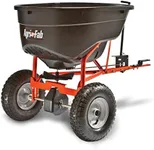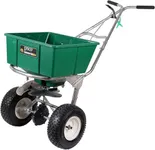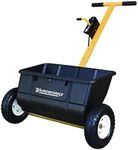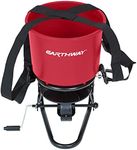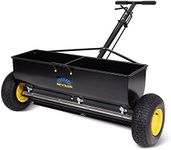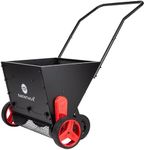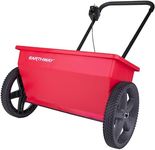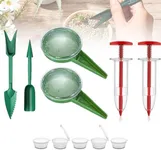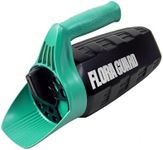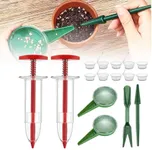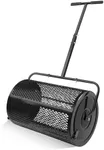Buying Guide for the Best Drop Spreaders
Choosing the right drop spreader for your lawn care needs can make a significant difference in the health and appearance of your grass. Drop spreaders are used to evenly distribute fertilizer, seeds, and other lawn care products. The key to selecting the best drop spreader is understanding the various specifications and how they align with your specific lawn care requirements. Here are the key specifications to consider when choosing a drop spreader and how to navigate them to find the best fit for you.Spread WidthSpread width refers to the width of the area that the spreader can cover in one pass. This is important because it determines how many passes you will need to make to cover your entire lawn. Spread widths can range from narrow (less than 20 inches) to wide (over 30 inches). If you have a small lawn or need precise control over where the product is applied, a narrower spread width may be ideal. For larger lawns, a wider spread width can save time and effort by covering more ground with each pass.
Hopper CapacityHopper capacity is the amount of material the spreader can hold at one time. This is crucial because it affects how often you will need to refill the spreader while working. Hopper capacities can vary from small (less than 20 pounds) to large (over 50 pounds). If you have a small lawn or prefer to work in short sessions, a smaller hopper may be sufficient. For larger lawns or longer work sessions, a larger hopper capacity will reduce the frequency of refills and increase efficiency.
Material and Build QualityThe material and build quality of a drop spreader determine its durability and longevity. Spreaders can be made from plastic, steel, or a combination of materials. Plastic spreaders are lightweight and resistant to rust, making them suitable for occasional use. Steel spreaders are more durable and can handle heavy-duty use but may be prone to rust if not properly maintained. Consider how often you will use the spreader and the conditions it will be exposed to when choosing the material and build quality.
Adjustable SettingsAdjustable settings allow you to control the rate at which the material is dispensed. This is important for ensuring even coverage and preventing over-application or under-application of products. Look for spreaders with easy-to-use adjustment mechanisms that offer a range of settings to accommodate different types of materials and application rates. If you plan to use the spreader for various lawn care tasks, having adjustable settings will provide the flexibility you need.
Ease of UseEase of use encompasses several factors, including the spreader's weight, handle design, and maneuverability. A spreader that is easy to push and steer will make the task more comfortable and less tiring. Consider features such as ergonomic handles, smooth-rolling wheels, and overall weight when evaluating ease of use. If you have a large or uneven lawn, a spreader that is easy to maneuver will be particularly beneficial.
Calibration and MaintenanceCalibration ensures that the spreader dispenses the correct amount of material, which is essential for achieving the desired results. Some spreaders come with calibration tools or guides to help you set the correct dispensing rate. Regular maintenance, such as cleaning and lubricating moving parts, will keep the spreader in good working condition. Choose a spreader that is easy to calibrate and maintain to ensure consistent performance and longevity.
